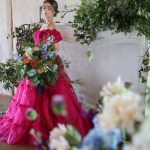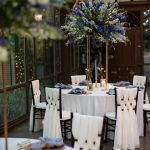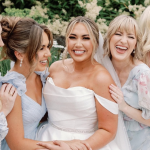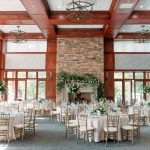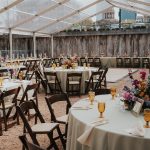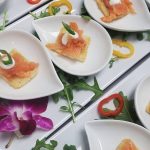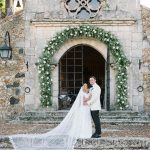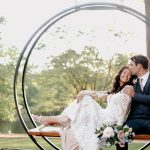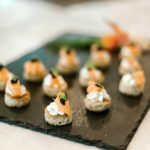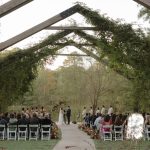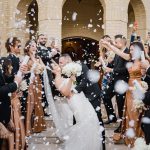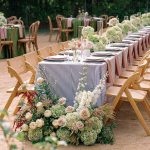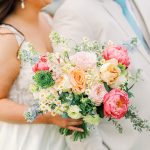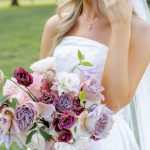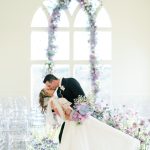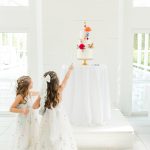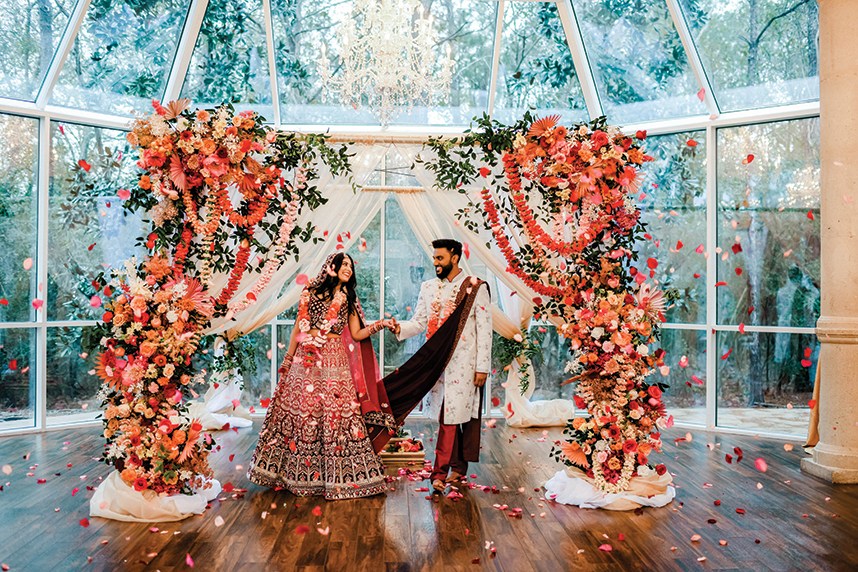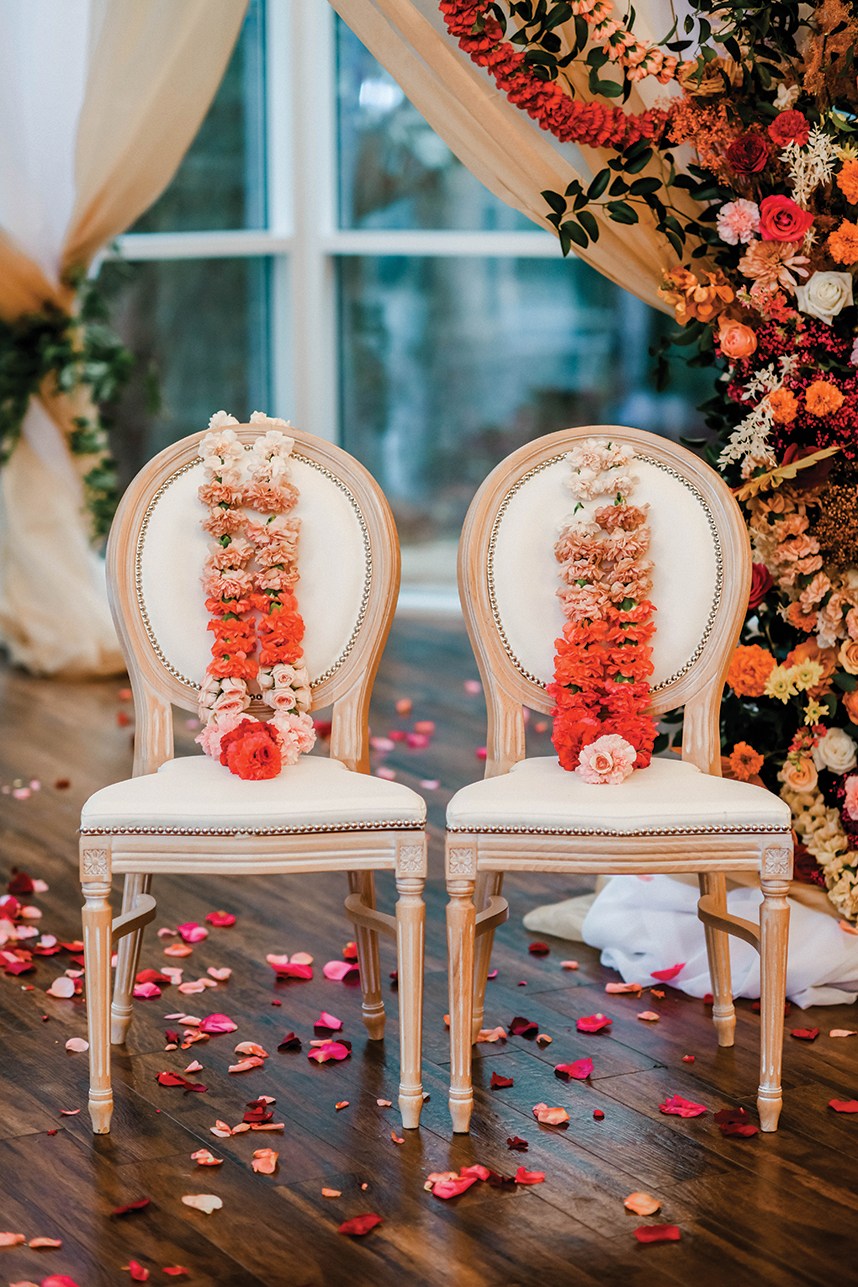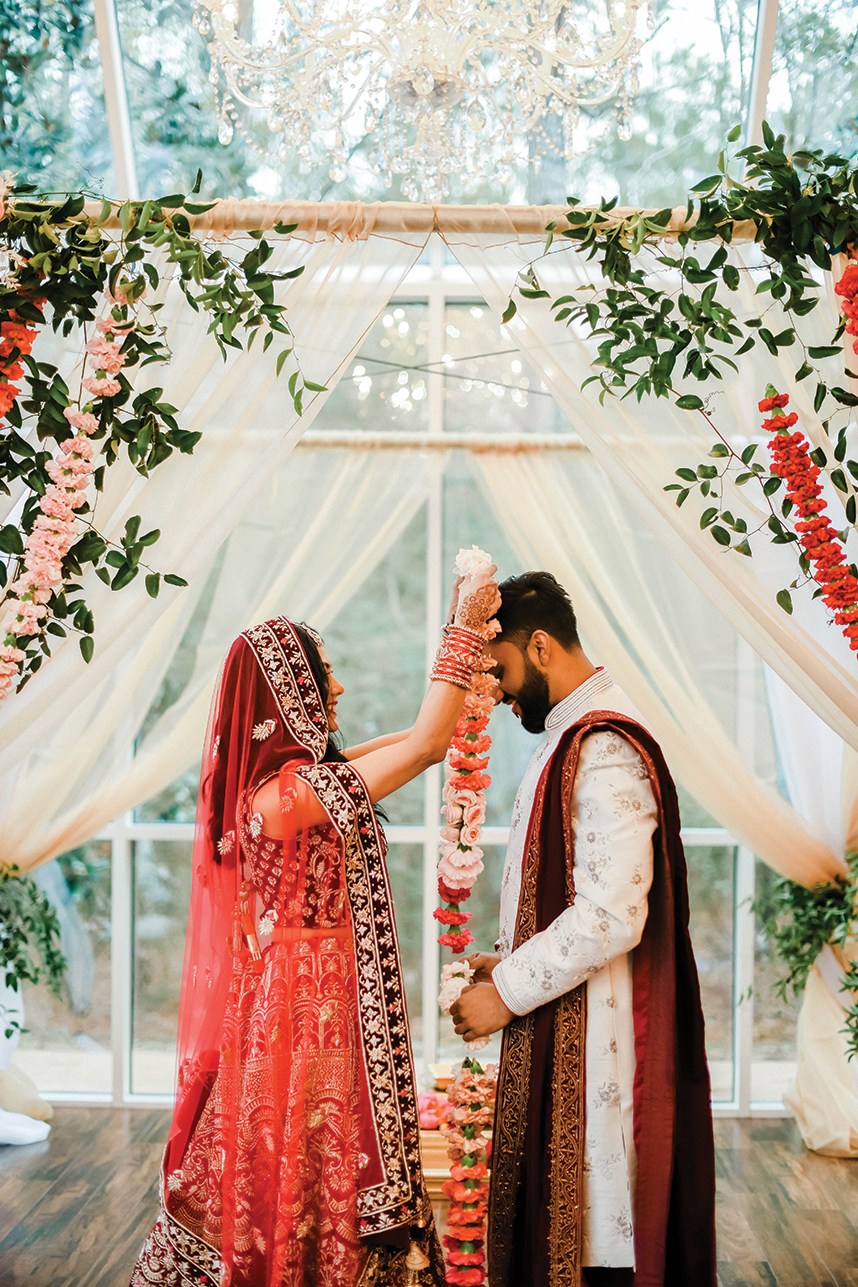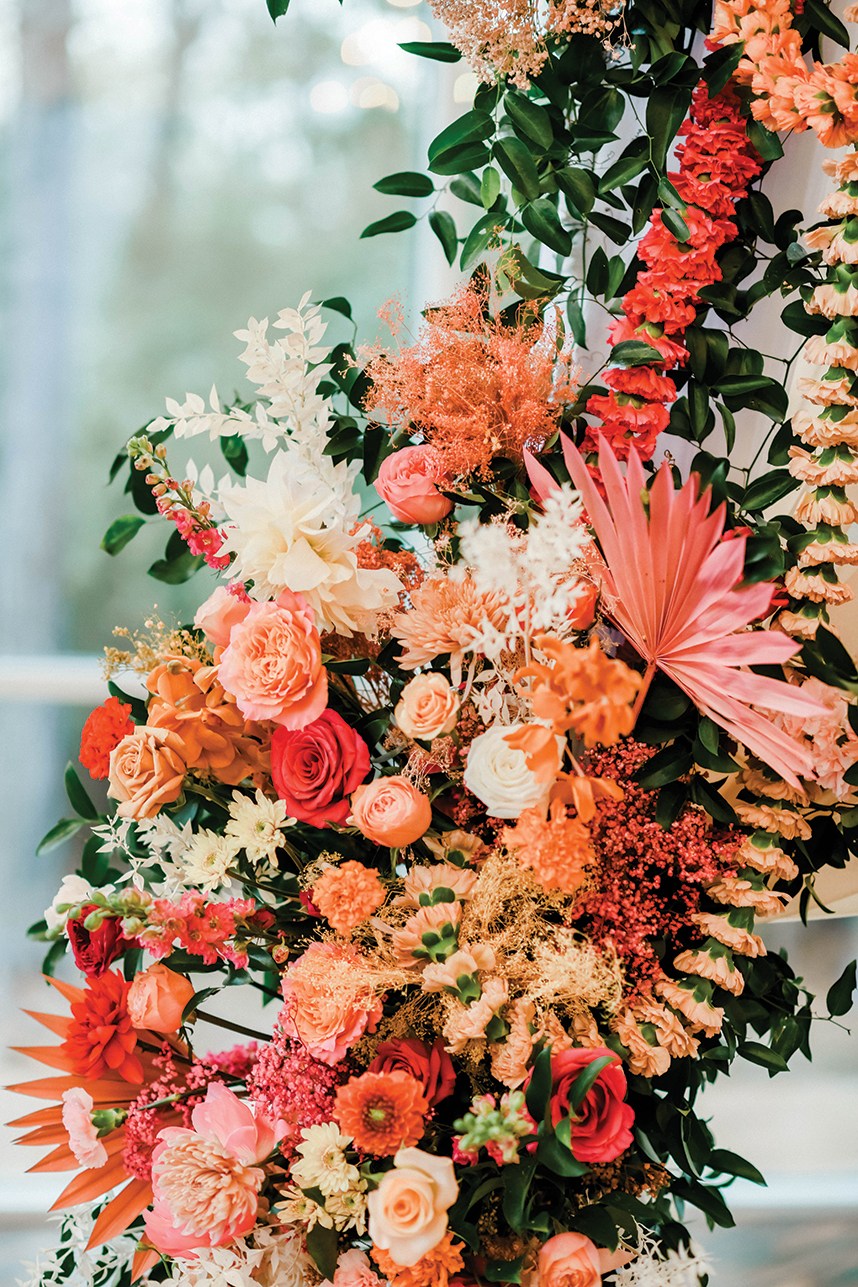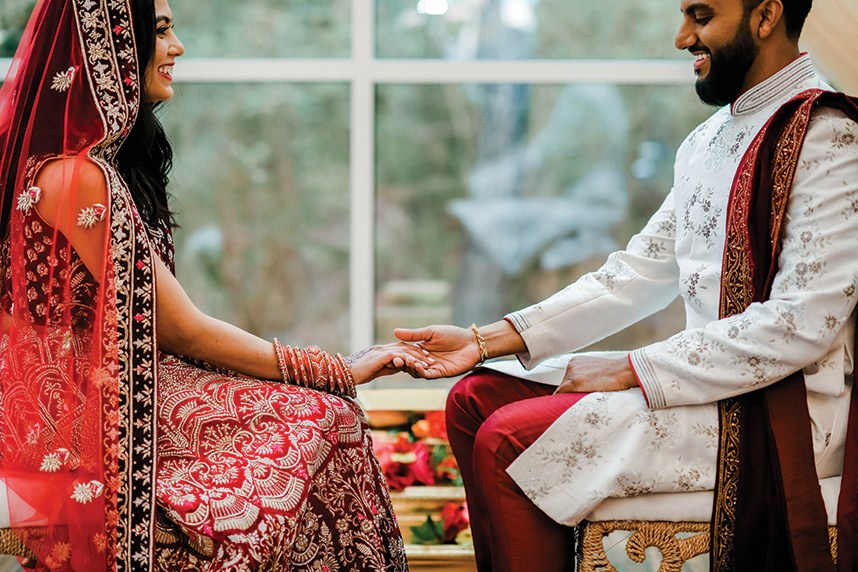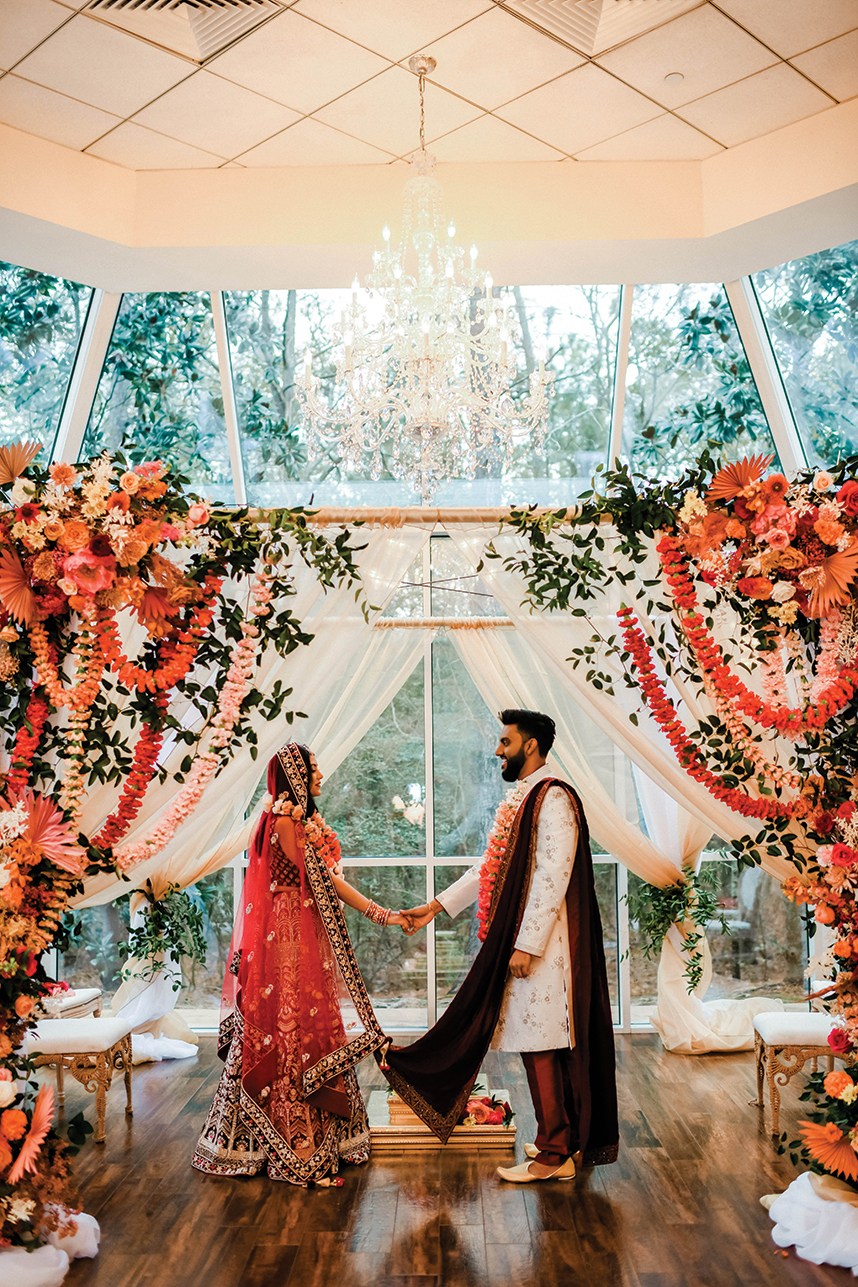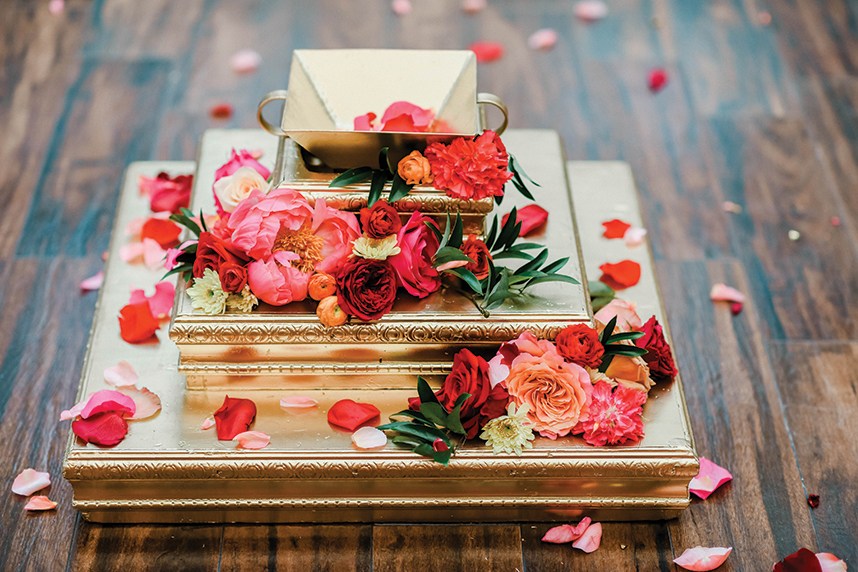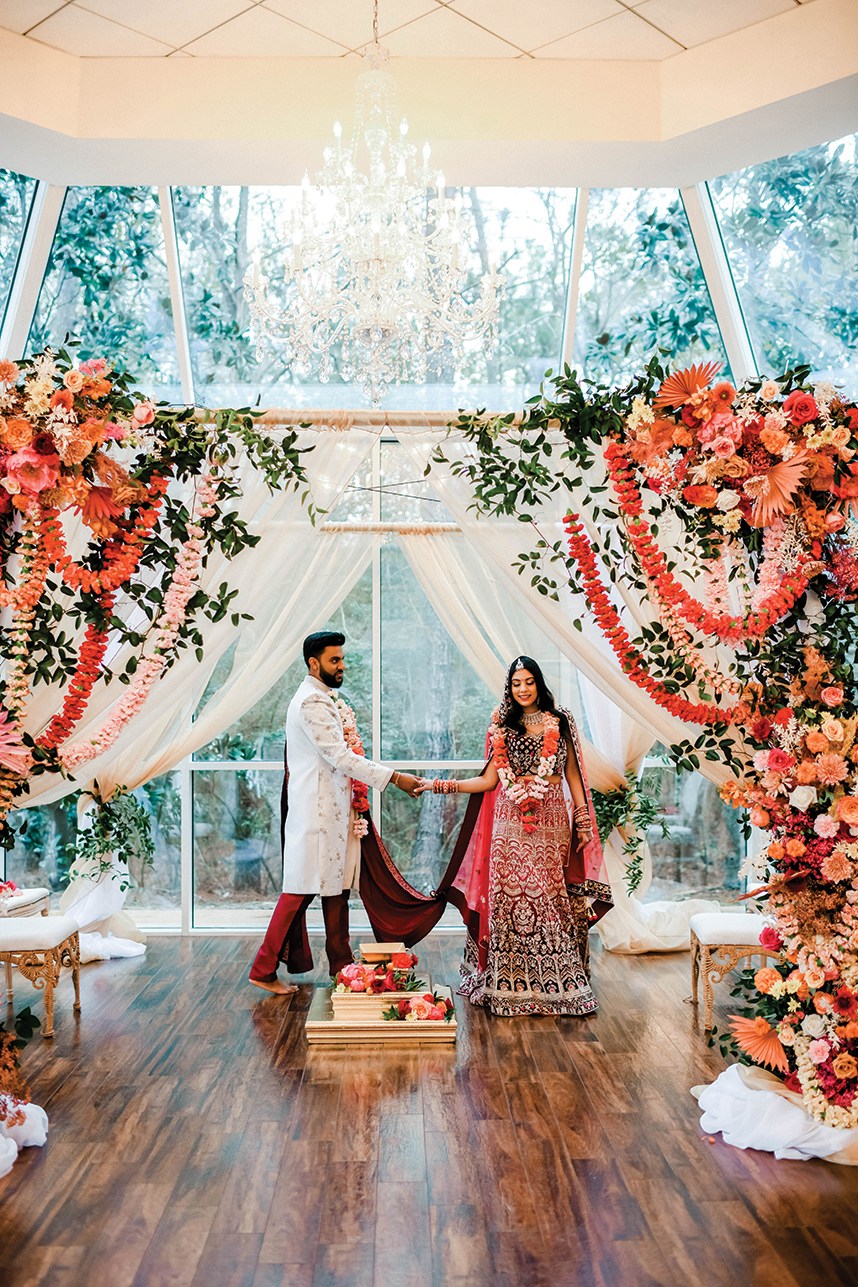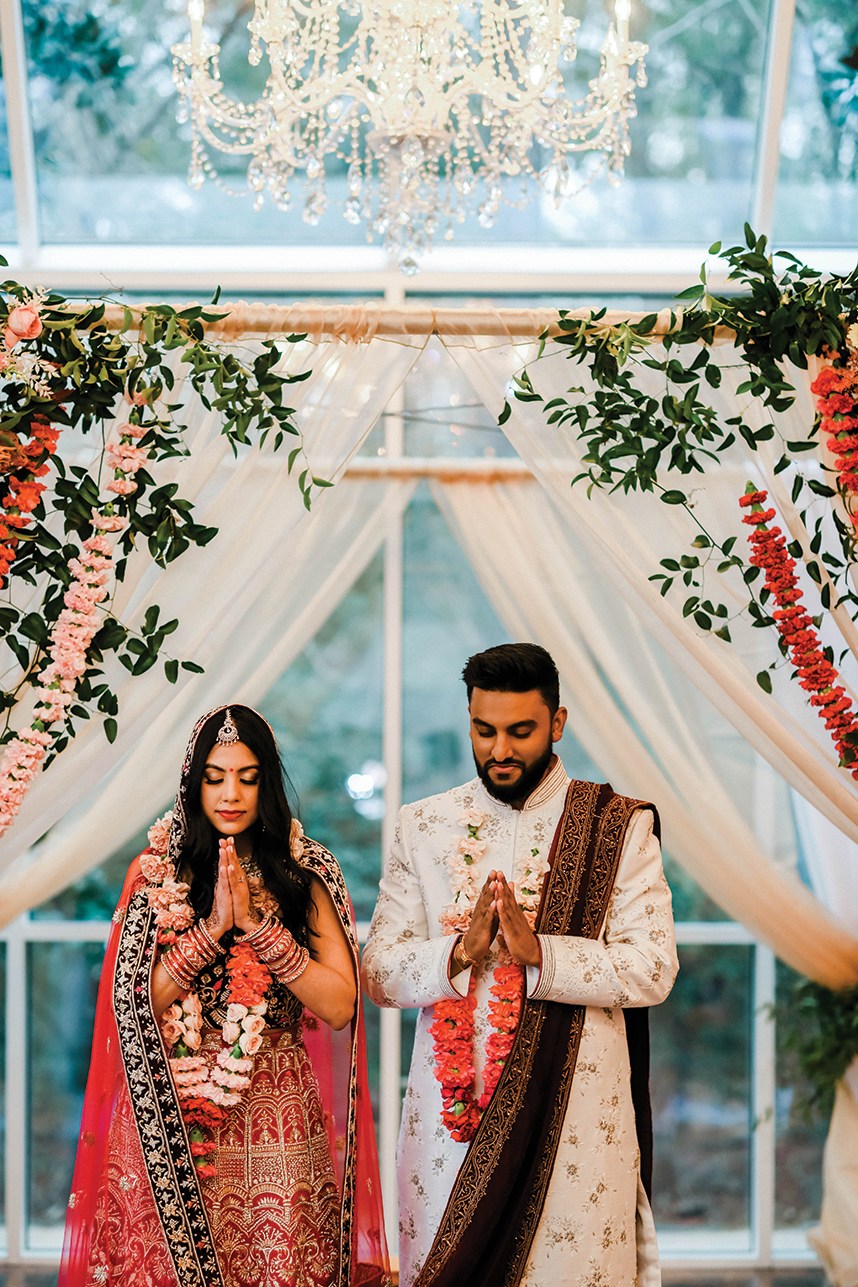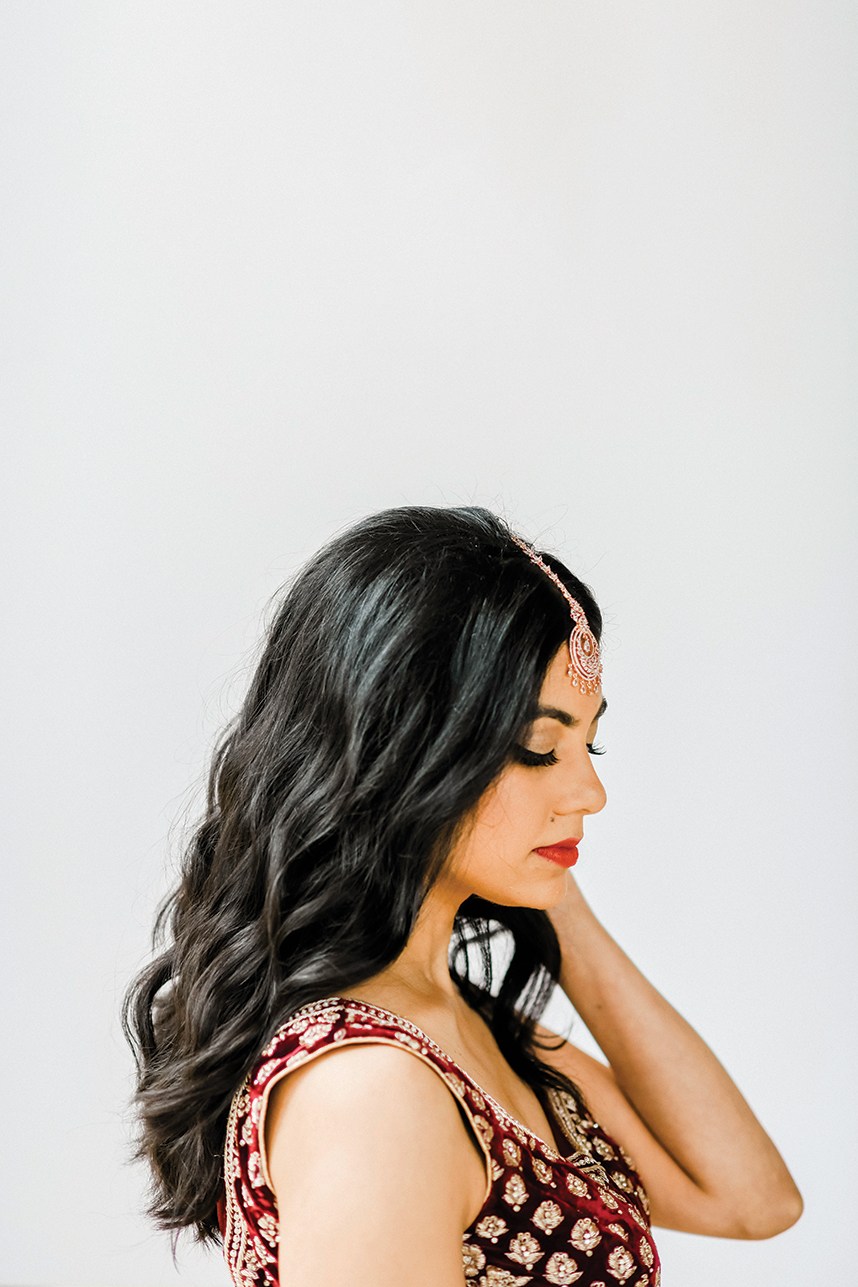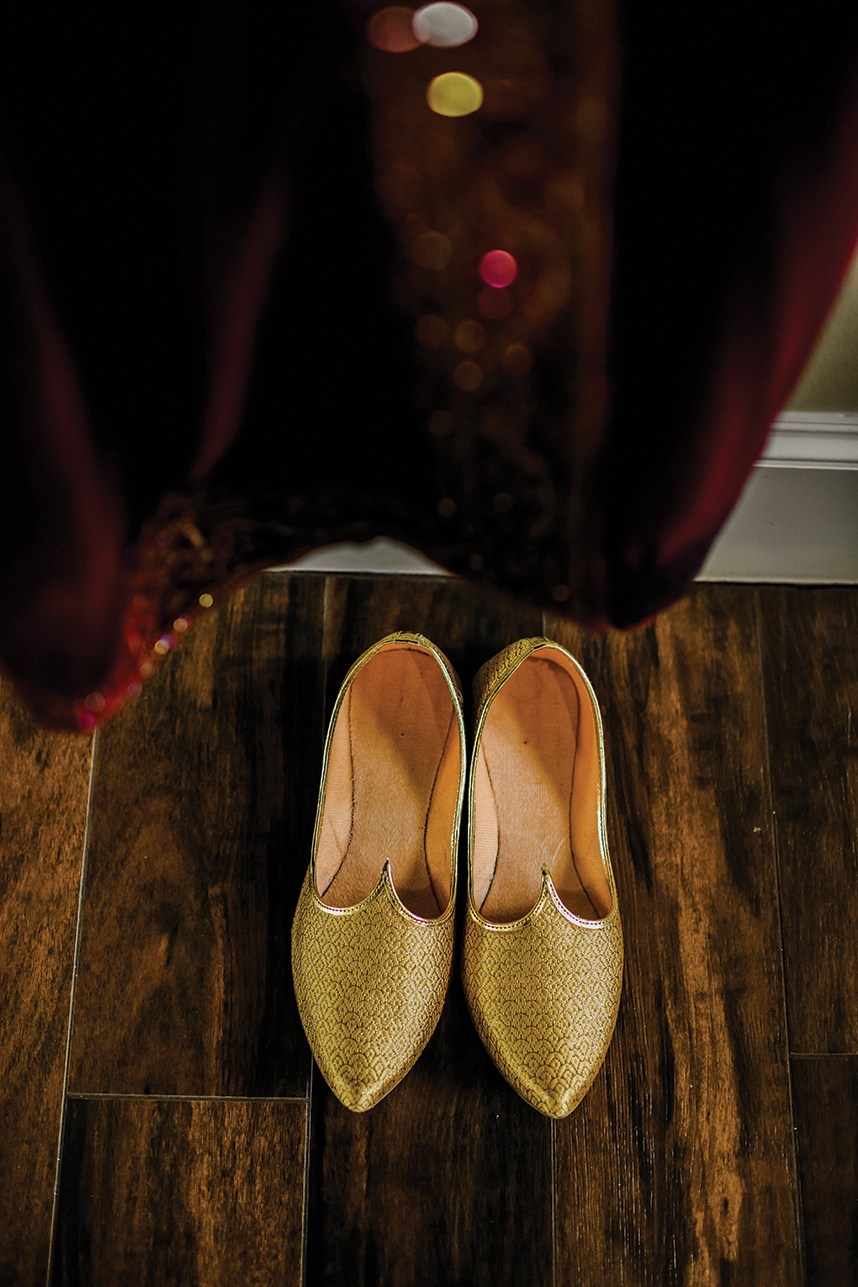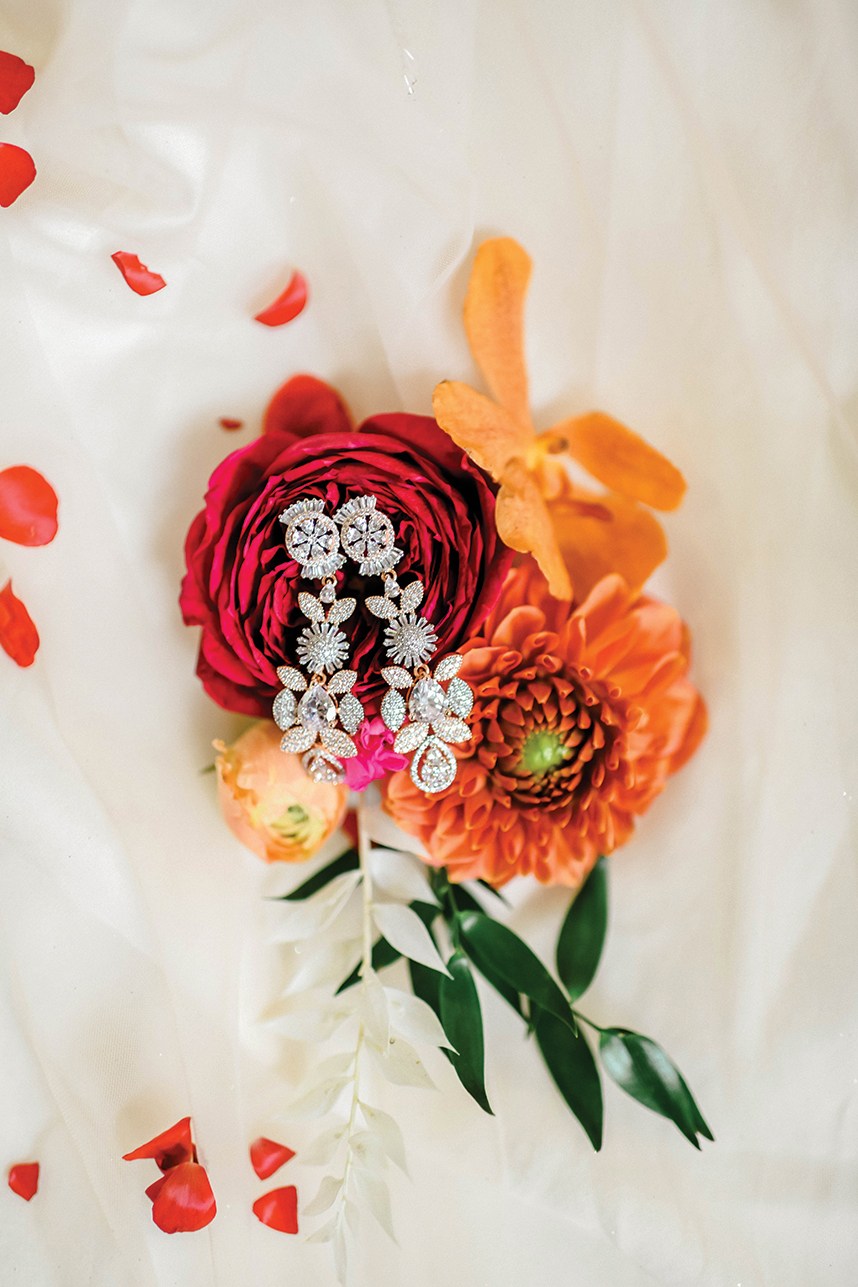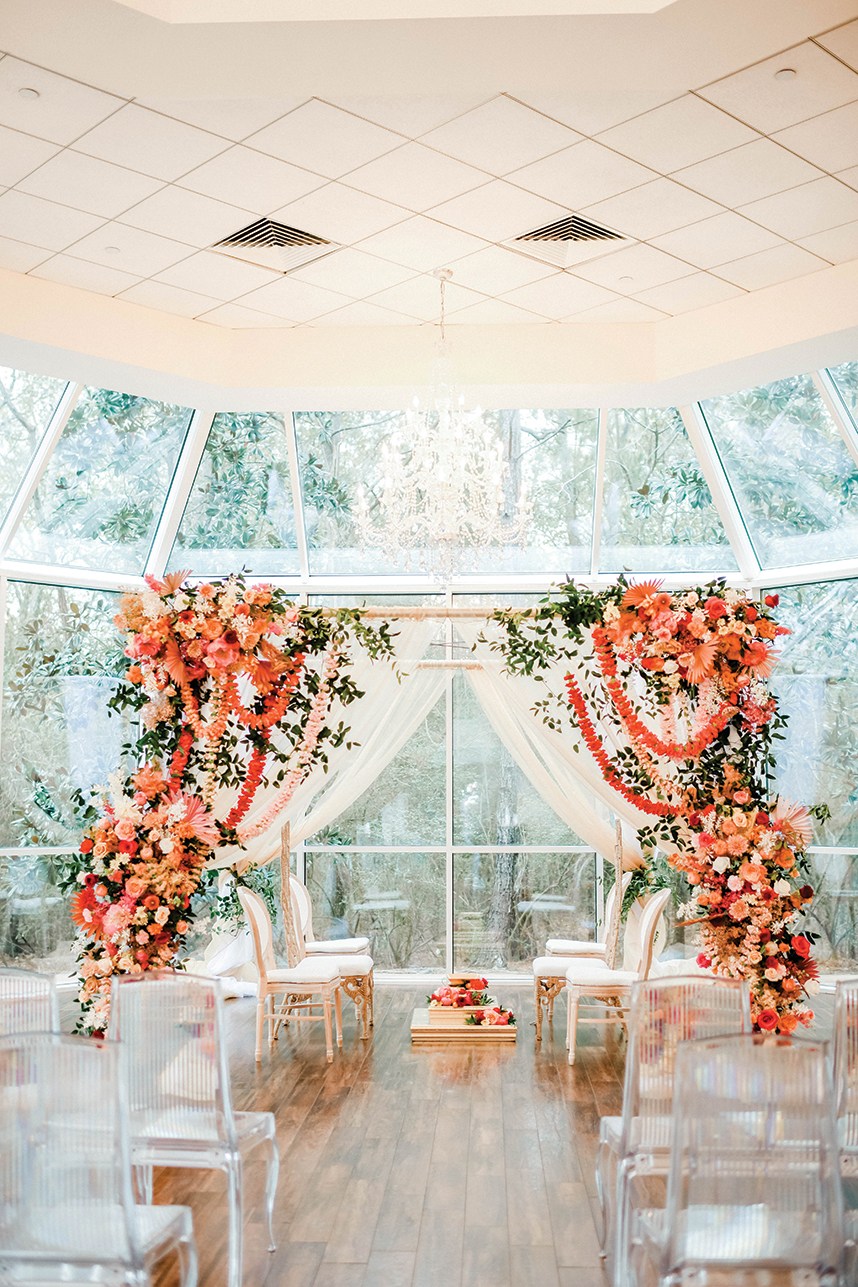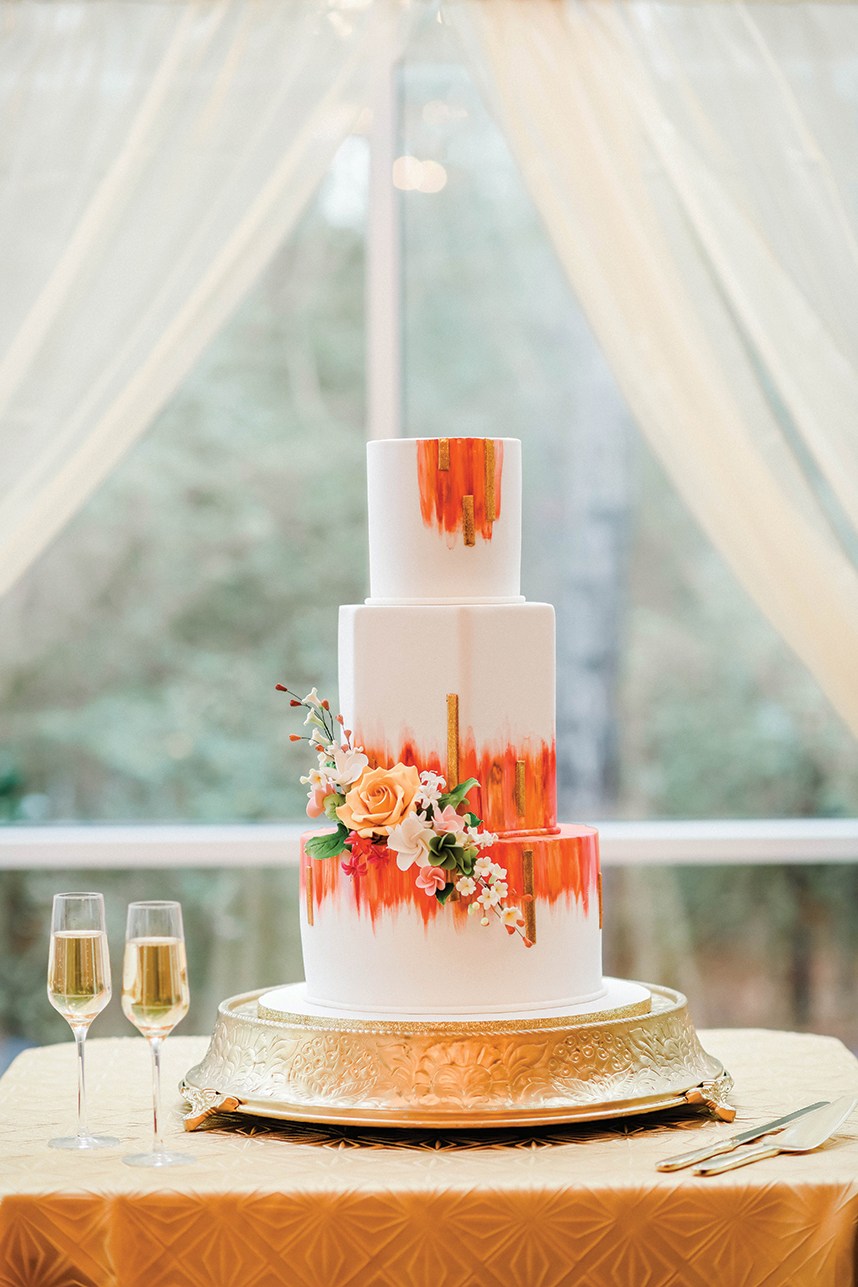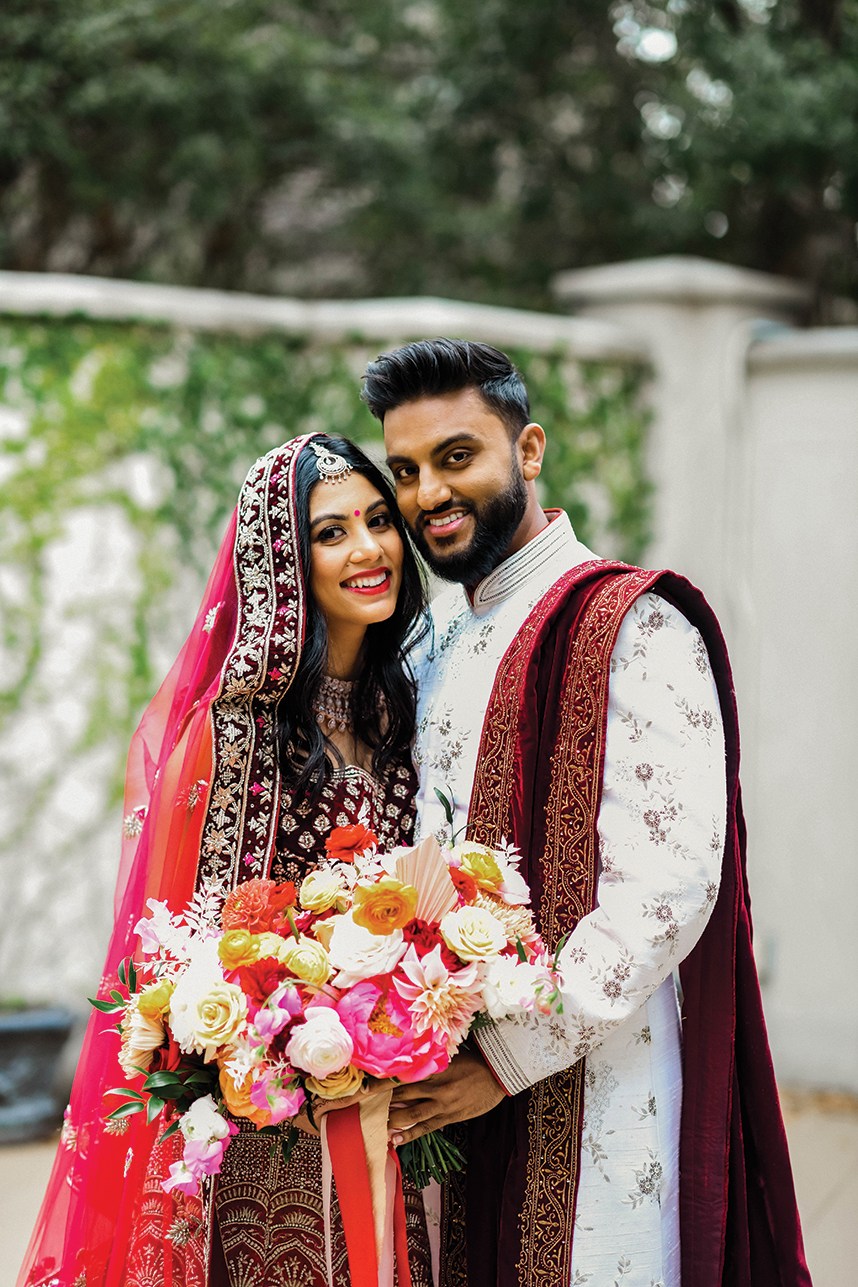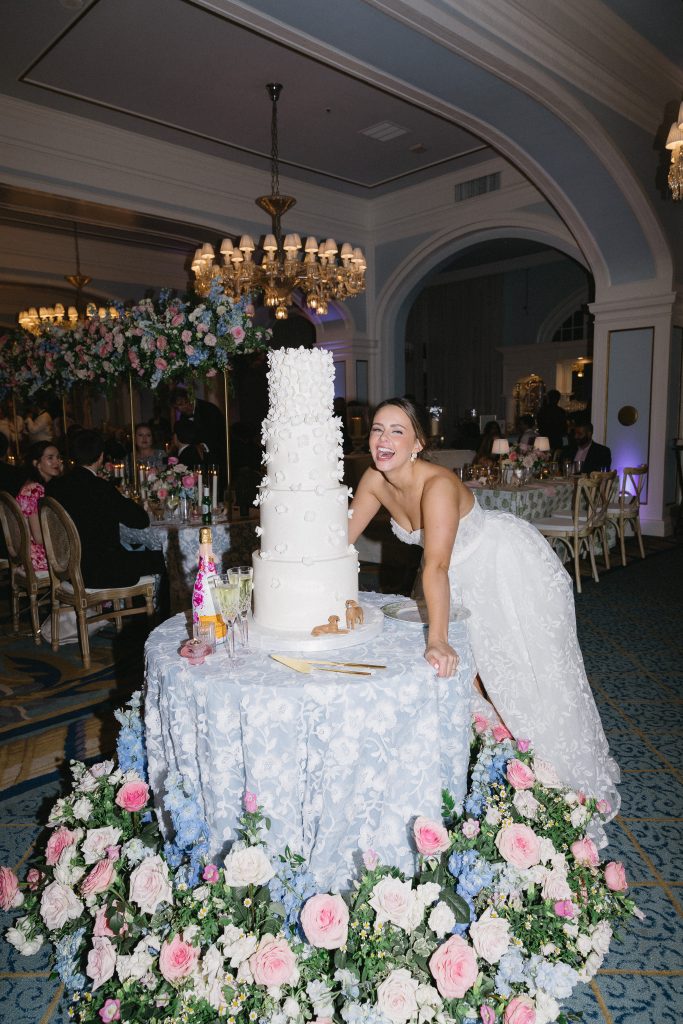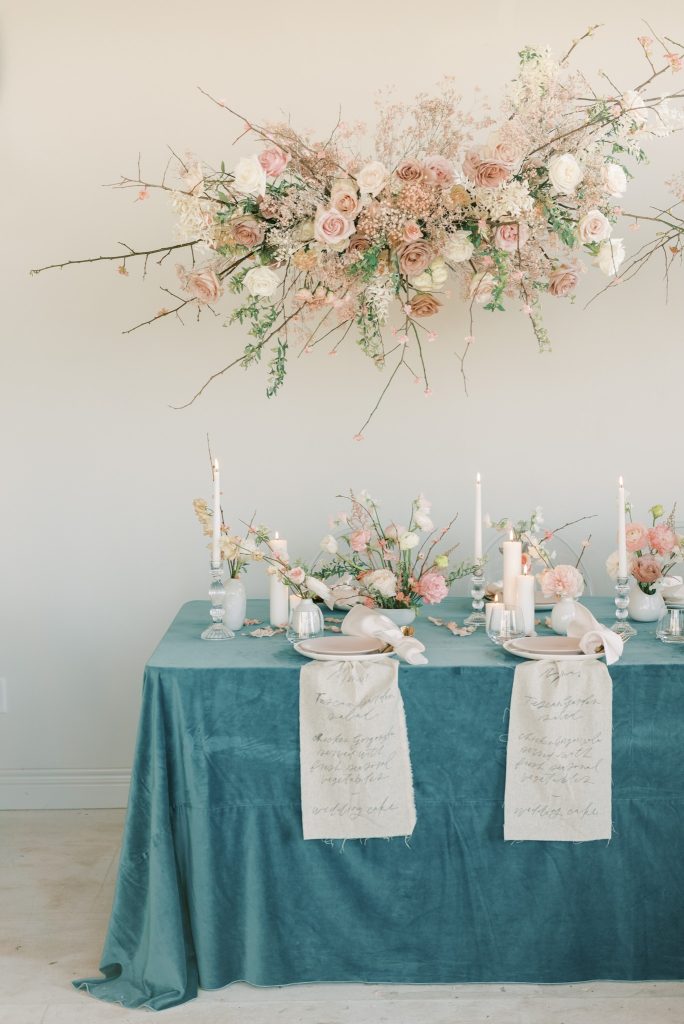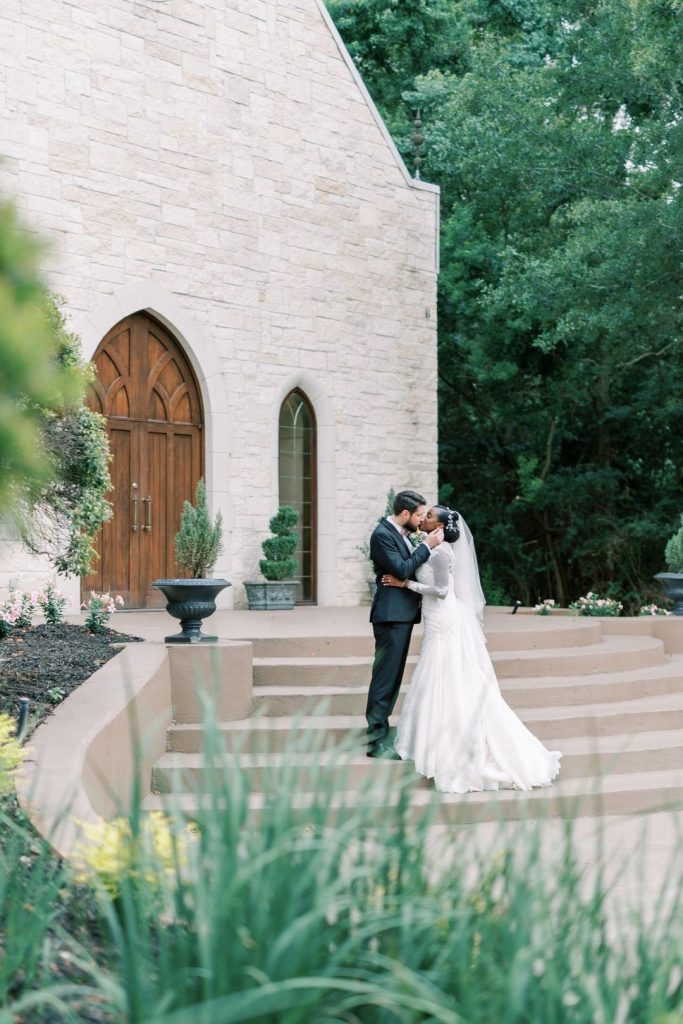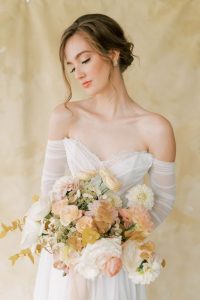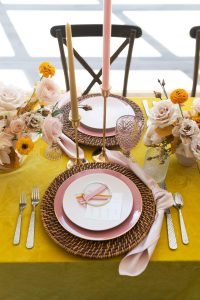A traditional Indian wedding ceremony involves a plethora of meaningful traditions, every one unique and beautiful in its own way! For this shoot, we wanted to showcase the integral parts of a traditional Indian wedding ceremony and highlight just how gorgeous all the parts, both non-tangible and tangible, can be when they all come together. Take a scroll through this special shoot and learn more about a multicultural Hindu ceremony along the way!
Photos // Rachel Driskell Photography
JAI MALA // Exchange of Garlands
The bride and groom welcome each other by exchanging floral garlands. This exchange signifies the unification of their hearts and souls and the formal acceptance of each other in marriage.
KANYADAAN // Hand In Hand
The bride has her right palm placed on the groom’s right palm, usually by her father or an uncle, to signify her passing to a new family. As they join hands, it signifies their union and acceptance of each other.
MANGAL FERA – Circling the Fire and Holy Vows // SAPTAPADI – Seven Vows
The bride and groom circle the fire four times making their vows in the presence of Agni, the God of Fire. In each round, they seek the four basic goals of human life: Dharma (moral sense to lead a good life), Artha (prosperity), Kama (energy and passion) and Moksha (liberation through self-realization). The couple then will take their seven steps together that represent the seven principles and vows to each other.
1. To respect and honor each other.
2. To share in each other’s joy and sorrows.
3. To trust and to be loyal to each other.
4. To cultivate the appreciation of knowledge, human values, sacrifice and service. 5. To reconfirm the vow of purity, love, family duties and spiritual growth.
6. To follow the principles of Dharma.
7. To nurture the bond of friendship and love.
AASHIRVAAD
Before the bride and groom leave the wedding altar, the priest blesses them on behalf of the gods and goddesses with everlasting happiness. The couple leaves the mandap and thereafter seeks the blessings of their parents, elders and guests.
These steps are very important pieces of a ceremony for both traditional and non-traditional Hindu ceremonies. In addition to these pieces, there are ten other steps that make up a condensed ceremony.
“Khushboo’s look was a more natural take on traditional makeup. I did a bronze and gold light smokey eye with a dramatic winged eyeliner and wispy lashes. This was paired with airbrush foundation to even out the skin tone, glowing skin and a pop of red lip.” – Nastassia with Tease HTX
“What I loved about the design was all the fun, bright colors mixed with some more pastel muted tones. The mix of traditional with a more modern twist with the painted baby’s breath, fan palms and bleached ruscus added in for a more modern look but still very upscale. We added carnation garlands to give the feel of curtains by looping them throughout the design for a more modern twist. The carnation mangalsutra garlands are used traditionally in Indian ceremonies, but I wanted to add them to the altar as a fun twist.” –Bobbi, Unforgettable Floral
The wedding mandap, or wedding altar, is a temporary structure constructed for the purpose of the marriage ceremony, made up of four points or pillars in a variety of shapes and design elements. The couple is traditionally joined beneath the mandap by their parents and the ceremony officiant.
“The cake is covered in white fondant with hand-painted colorful lines, golden glitter covered fondant strips for a hint of glam, and our show-stopping sugar flowers. We chose a hexagon shape as the middle tier to enhance the uniqueness of a modern Indian wedding.” -Melanie, Cakes by Gina
Video // The Drakes
Spectacular, right? If you’re planning a multicultural wedding, we have tons of advice for you here, and lots of ideas for ways to honor culture and heritage in your wedding here! Happy wedding planning!
Other Local Vendors:
Prashe, Tease HTX, The Drakes, The StoryBook Event, Panache By Sharmeen


